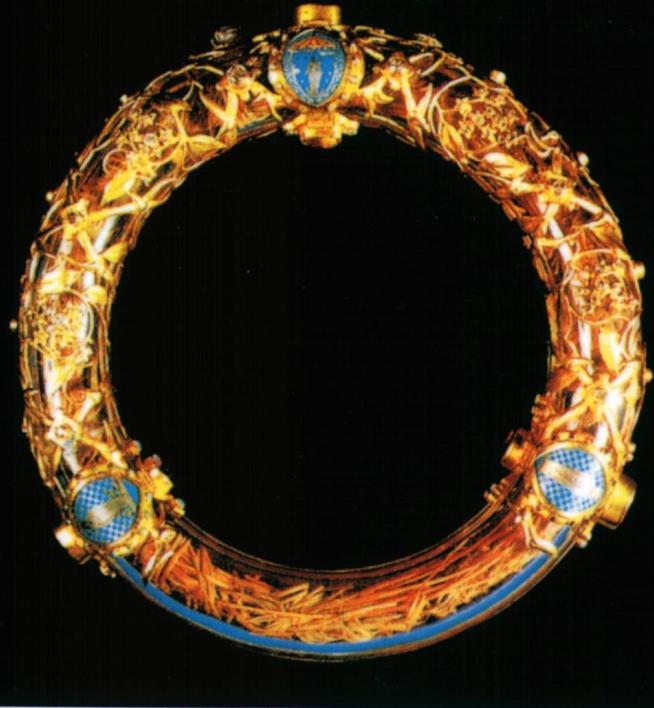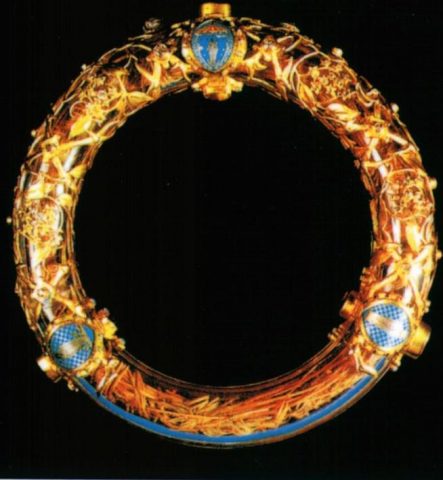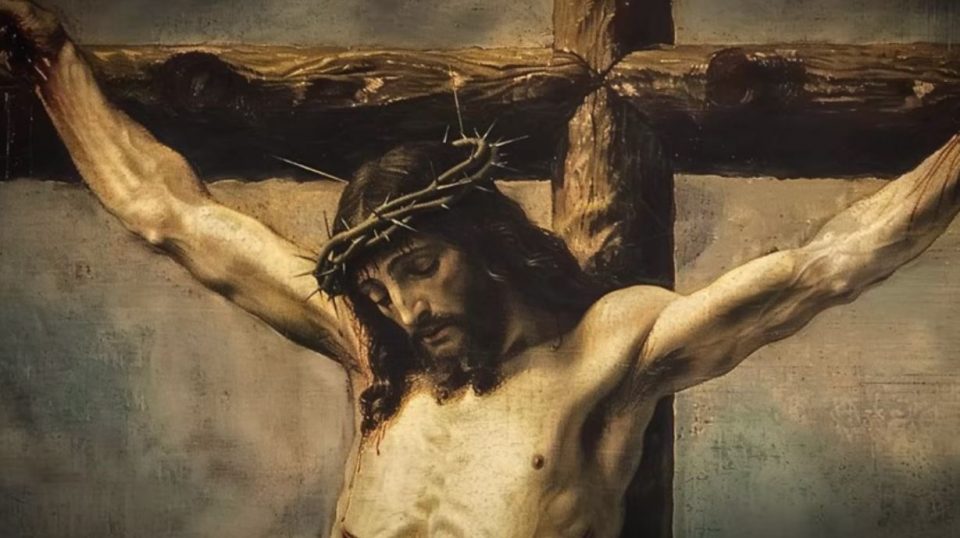The State of the Faith in Europe and Easter Hope
It is almost impossible not to find a dire symbolism in the burning of Notre Dame Cathedral in Paris on the first day of Holy Week, the day after – as Ross Douthat points out – Catholics worldwide listened to a Gospel in which St. Luke recounted the rending of the veil of the temple.
Notre Dame is the symbolic heart of the Catholic Church in France. And France – the “eldest daughter of the Church” – is in many respects the symbolic heart of the faith in Europe. Many felt something like physical pain watching this most magnificent and history-laden Catholic cathedral burning. Many too found in this horrific event a physical manifestation of the destructive fires that are ravaging the Church in France, Europe, and much of the world.
Bishop Athanasius Schneider, the auxiliary of Astana, Kazakhstan, for instance, said in a reflection that the burning of Notre Dame is a sign of the “spiritual conflagration” that has swept the Church. Bishop Schneider pointed to the destruction over the past 50 years of the “Church’s most spiritual masterpieces,” including its moral teachings and liturgical life. Cardinal Raymond Burke had much the same thoughts. The fire, he said, leads Catholics to contemplate the “attacks upon the infinite beauty of the faith by the grievous sins and crimes of our day.”

It is hard to deny the signs that a vast “spiritual conflagration” has indeed engulfed the Church in France, and across Europe. One recent study, for example, found that only 5% of French Catholics regularly attend Mass. That translates into just 1.2% of the population of the country. This is in a country that has some 45,000 Catholic churches spread across it – reportedly more than any other European nation – churches that were once, not so long ago, brimming with faithful.
Even as Notre Dame was burning, many people pointed to the spate of vandalisms and desecrations at many of France’s churches in recent months and years. According to one report there were well over 1000 such attacks in 2018, and their frequency continues to climb. In recent cases, vandals have smashed statues, burned altar cloths, stolen and desecrated the Blessed Sacrament, smeared a cross with human excrement, and set a church in Paris on fire.
Such attacks are horrific, and a worrisome sign of a growing trend of anti-Catholic sentiment, and outright diabolic activity.

And yet, truth be told, there is scarcely any need for vandals to destroy the churches in France. Search “French church demolition” on Youtube and you will find videos of gorgeous churches hundreds of years old in villages across France being reduced to rubble by demolition crews. In 1907 the French government appropriated all French churches, assuming as well the responsibility of maintaining them. Now that so few people actually use those churches, however, many local governments are finding it very difficult to justify the expense of maintaining them. In some cases, they’re simply tearing them down.
The situation is much the same in other European countries. In 2017, for instance, the bishop of Trier, the oldest diocese in Germany, announced that they would be consolidating parishes, reducing the number of parishes from 172 to just 35. According to the Catholic News Service, similar church closures have swept Germany and other European countries: Berlin went from 105 parishes to 35; Vienna from 660 to just 150; Luxembourg from 274 to 33; and Utrecht (in the Netherlands) from 326 to just 48. And so on. Many of these churches, architectural marvels and the spiritual homes for generations of Catholics, are being sold for secular purposes, or dismantled.
As Bishop Schneider observed, however, the worst manifestation of the destructive fires in the Church, the “climax of this decades-long spiritual conflagration,” is the sex abuse scandal. “Sadly, we must say that the handling of the clerical sexual abuse scandal has remained more or less on the level of emotional dismay,” he lamented. “The true roots of this crisis have not been transparently disclosed, nor, consequently, have effective spiritual medicine and peremptory canonical norms been applied.”
In a recent letter in which he attempted to identify the “roots” of the sex abuse crisis, Pope Benedict traced the cause above all to the “absence of God.” Even Christians and priests, he said, “prefer not to talk about God, because this speech does not seem to be practical.” This abandonment of God, he wrote, is manifested in the decision of the framers of the European Constitution not to include mention of “responsibility to God as a guiding principle.” “This decision reflects the situation in the West,” he said, “where God has become the private affair of a minority.”
Though political elites believe that they are ushering in an ideal age of freedom by relegating God to the peripheries of public life, or even expunging His presence altogether, the results are not the freedom that they hope for: they are, rather, the widespread moral chaos of which the sex abuse scandal – as Pope Benedict rightly observed – is simply the rotten fruit.
Resurrection from the Ashes
This is an Easter column, however, and I do not wish to belabor the negative symbolism of last week’s fire. Indeed, the negative symbolism is only half the story, and not the most important half. For on this Easter Monday, we no longer contemplate the suffering and death of Our Lord, but rather His resurrection. And just as the outward horrors of Good Friday included the seeds of a greater joy than anyone could have possibly conceived, so too can we find within the burning of Notre Dame and the aftermath a sign of a great hope.
Even as the fires still smoldered, the truth that resurrection, and not death, always has the final say, was being manifested in amazing ways. On the sidewalks and streets surrounding the great cathedral, groups of Catholics were videotaped on their knees, singing Marian hymns and praying the rosary. The next day, Catholics organized a public procession and candlelit vigil, in which thousands participated. God, once again, was visible in the streets of Paris. The beautiful witness of these lovers of Notre Dame, whose love for this building sprang from the same love that motivated its original builders – a love of Jesus and His Holy Mother – was broadcast around the world.
Meanwhile, many of our worst fears about the fate of Notre Dame were not realized: the genius of the cathedral’s original architects, and the courageous labors of the Parisian firefighters ensured that the main structure was preserved. Since then, well over a billion Euros have been pledged to contribute to rebuild the great cathedral.
It seems certain, then: Notre Dame will rise again. So, too, will the Church.

Perhaps one of the most beautiful – indeed chill-inducing – stories to come out of last week’s inferno has to do with the fate of some of the cathedral’s most precious relics, and the Blessed Sacrament. As the fire raged in the roof of the cathedral, Fr. Jean-Marc Fournier, the chaplain of the Paris Fire Brigade, entered the Church, intent on saving relics such as Christ’s crown of thorns, and the Eucharist in the tabernacle.
In a recent interview, the priest described the scene: “We had a vision of what hell may be: like waterfalls of fire pouring down from the openings in the roof, due to the downfall not only of the spire but also of other smaller debris in the choir.” After experiencing some difficulty in opening the safe that the crown of thorns is housed in, Fr. Fournier and the firefighters succeeded. However, according to Fr. Fournier, his top priority was retrieving the Blessed Sacrament.
“Everybody understands that the Crown of Thorns is an absolutely unique and extraordinary relic, but the Blessed Sacrament is our Lord, really present in his body, soul, divinity and humanity,” said Fr. Fournier in that same interview, “and you understand that it is hard to see someone you love perish in the blaze. As firefighters we often see casualties from fire and we know its effects, this is why I sought to preserve above all the real presence of our Lord Jesus-Christ.”
Upon rescuing the Blessed Sacrament, Fr. Fournier paused for a moment in the middle of the Church and performed a benediction. “Here I am completely alone in the cathedral, in the middle of burning debris falling down from the ceiling, I call upon Jesus to help us save His home,” recounts Fr. Fournier. What an astonishing image! An image, indeed, that sums up what our response should be to the “spiritual conflagration” in the Church: i.e. a single-minded devotion to Christ truly present in the Blessed Sacrament, and a fearless resolve to stand fast and to hold to Christ in the midst of the destruction.
It is an astonishing to contemplate, that thanks to this fire, the whole world’s attention was fixated this Holy Week on the fate of Christ’s crown of thorns, and his sacramental present in the Eucharistic. Media outlets globally reported on the heroism of this priest in rescuing both, and their meaning for Catholics.
Pope Benedict’s letter, too, emphasized the necessity of a Eucharistic response to the crisis in the Church. “The declining participation in the Sunday Eucharistic celebration shows how little we Christians of today still know about appreciating the greatness of the gift that consists in His Real Presence,” he lamented. “The Eucharist is devalued into a mere ceremonial gesture when it is taken for granted that courtesy requires Him to be offered at family celebrations or on occasions such as weddings and funerals to all those invited for family reasons.”
Rather than attempting to rebuild the Church in our own image, Pope Benedict urged that “what is required first and foremost is the renewal of the Faith in the Reality of Jesus Christ given to us in the Blessed Sacrament.”
Pope Benedict also urged the faithful to find the hidden beauty present in the Church, in the form of the ordinary holiness of so many Catholics. “Yes, there is sin in the Church and evil,” he wrote. “But even today there is the Holy Church, which is indestructible. Today there are many people who humbly believe, suffer and love, in whom the real God, the loving God, shows Himself to us. Today God also has His witnesses in the world. We just have to be vigilant in order to see and hear them.”
I will conclude with these powerful words by Fr. Fournier, that faithful and heroic Parisian priest. These words summarize what I wish to convey in this column, and indeed the whole Easter message. “We started Lent by imposing ashes and saying, ‘remember you are dust’, and truly this [fire] was a miniature Lent,” said Fr. Fournier. However, he added, “[T]he Cathedral went to ashes, not to disappear, but to emerge stronger, as we Christians are, after the Resurrection of our Lord Jesus-Christ.”
For Christ is risen! Indeed, He is risen!







